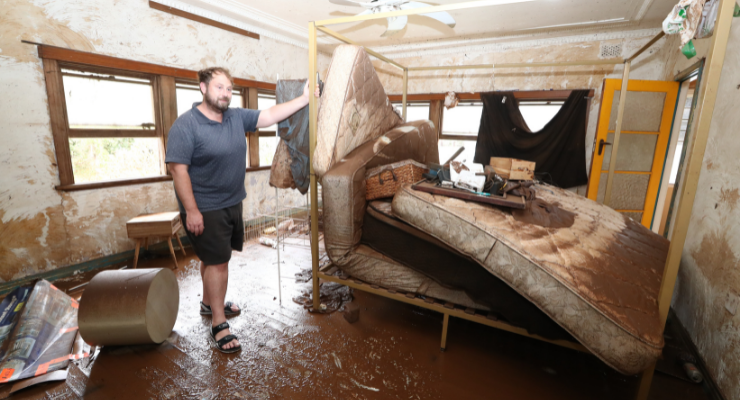
You’ve seen the stories, business or home owners still waiting for their promised payout, a fair payout, or any agreed payout from their scurrilous insurance company.
But are these complaints indicative of widespread difficulties Australians are having getting insurance companies to pay up? Or are they one-off tragic tales that, while certainly deserving of sympathy, tell us nothing about how many people are similarly affected and what broader social, political and/or legal changes are needed?
In the old days, the conclusion to draw from such stories was clear. Why? Because journalists would only write them based on well-researched reports into a widespread problem, which the media would then help to illustrate with one person’s story.
Today the tail wags the dog. Pathos-filled anecdotes fill our feeds, risking compassion fatigue and challenging our trust in the institutions we need to rely on.
Which brings us to the data about how insurance companies are responding to the claims submitted by Australians struck by recent climate disasters — for example, by those whose homes were imperilled by last year’s storms in Victoria’s Dandenong Ranges or by this year’s floods in NSW and Queensland.
The Australian Financial Complaints Authority (AFCA) told Crikey it received 93 complaints from Victorians out of 33,000 insurance claims overall. That’s 0.28% of the total. About 54% of those complaints concerned the denial of claims, and the remainder were divided between concerns about delays and the amount reimbursed.
While it’s too early to say what the final number will be, there have been 216,464 insurance claims from the south-east Queensland/northern NSW floods, and 307 complaints about insurers, banks and other credit providers.
That’s just 0.14% of total claims that have been the subject of a complaint. The residual number of Australians is negligible when you consider that 60% of general insurance claims are resolved by agreement.
This doesn’t mean that you don’t deserve sympathy if you are one of the unlucky ones. Nor am I saying you shouldn’t turn to the media to draw attention to your plight.
My beef is with a media that exploits your story for clicks in a way that suggests to readers that you’re one of many — why else would your individual tragedy be covered by a newspaper — when there’s no evidence this is the case. Especially when the result of this misframing is that citizens become even more cynical, imperilling the smooth working of a society that needs trust to survive.








When reactors at Fukushima broke down, the Japanese press perpetuated a fear among their public that nuclear reactors blow up. Right across Japan the public were terrorised by their press insinuating that they were all gonna die. Unknown hundreds of frail people did die from the fear arising, and more than a thousand frail people were killed by the evacuation that was necessary only to quell the spreading panic. No one at all died from radiation, but 16,000 were killed in the more boring tsunami. Worldwide, the press continues to conflate the two as if the one caused the other.
Someone put a camera on a hillside hoping to catch a mushroom cloud, but caught the hydrogen explosion instead. The freak event became presented as a trend where all reactors are liable to blow up, a myth that still continues to be perpetuated for the titillation of a fearful public. In consequence most of Japan’s nuclear generators were shut down and the replacement fossil emissions remain elevated to this day.
It was three hydrogen explosions: one a day for three days. In such cases logic and reason go out the window, with survival becoming the instinctive reaction. So Fukushima ended the nuclear industry’s hopes. Coal kills millions of people every year but that hasn’t stopped us burning it like there’s no tomorrow. Crazy.
Decarbonising the world requires nuclear energy for the heavy lifting. Like the model T Ford, small conservative designs can be mass produced and trucked into place – as long as our heads of state agree to it. On the way, we must expect that the click bait media will push all sorts of scary fantasies to a distrusting public. We should hope that public attitudes to nuclear reactors advance past requiring a man with a red flag walking in front of each of these newfangled contraptions.
As usual, “…small conservative designs can be mass produced and trucked into place…”
Like fusion, always in the near future.
Shows like A Current Affair and Today Tonight used to stir up the masses with these types of stories – take a outliner event and pretend it’s a major (negative) trend.
Most people should by now have a filter that automatically inserts when a personal anecdote appears in the media as news.